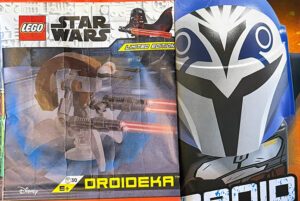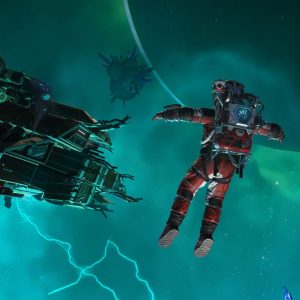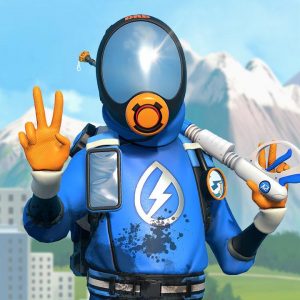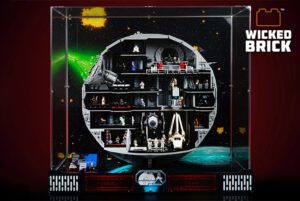Crashing the Kart Racer Party.
Twenty years ago, Naughty Dog’s Crash Team Racing made a name for itself as “the other good kart racer.” And to this day its dynamic courses, flavorful lore, challenging-yet-clear power-sliding mechanic, and lack of catch-up items make it a game that deserves better than living in Mario Kart’s shadow. Despite a few seriously frustrating single-player races, Crash Team Racing Nitro-Fueled is a thrilling ride that keeps the excellent original game intact while adding some quality of life updates, such as an improved HUD, and obligatory modern trappings such as unlockable cosmetics.
Crash Team Racing Nitro-Fueled instantly transports me back to 1999 and the early 2000s with its familiar tracks, cartoonishly bright colors, and ridiculous plot of stopping Nitros Oxide from turning Earth into a parking lot. But this remaster is far from stuck in the past: visually, it looks stunning with vivid details around every corner and animations that give each character plenty of personality. The ability to swap between characters during Adventure mode and the cosmetic options are welcome additions, and learning to master each of these 31 tracks proved to be a real challenge because of their frequent tight turns, competent (though sometimes cheap) competition from the AI.
CTR Nitro-Fueled has an Adventure mode, local and online play, five battle modes, and three challenge modes building on the foundation of the original, but what matters most is how it feels to get behind the wheel. In that regard, Crash Team Racing Nitro-Fueled is a success. The wickedly fast speed, which is significantly faster than Mario Kart 8 Deluxe, can be jarring at first but it was a welcome joyride once I got a feel for the course. The karts are fast in nature but the power-slide mechanic takes that speed to another level.
“
The tracks were designed to make the power slide shine and the result is something fast, playful, and memorable.
Power sliding, aka drifting, is a classic mechanic across kart racers but CTR Nitro-Fueled has a unique approach to it. The bottom right-hand corner has a HUD equipped with a bigger and better turbo meter than we’ve seen in previous games in the franchise. Here’s how it works: you initiate a slide by holding L1 or R1, and move the joystick based on which direction you intend to drift in. The meter will fill and, once it’s red, you can tap the opposite trigger to perform a “good” boost that rockets you forward, but if you wait a bit longer the meter will fill to the second section and get you a “perfect” boost that blasts you ahead even faster. Chain three of these together and you’ll get an even stronger boost, calling into question the so-called perfection of the individual boost.
The amount of feedback the turbo meter gives you makes power sliding easy to understand and yet still hard to master. You know exactly when and why you fail. And when you succeed, you can feel proud as you slide to victory.
Tracking Well
There are 31 race single tracks in Crash Team Racing Nitro-Fueled cutting across both Crash Team Racing and Vicarious Visions’ 2003 sequel, Crash Nitro Kart. Given that, it’s a disappointment that the Adventure mode only sends us through just 17, (minus a few optional challenges), all of which come from the original CTR.
I adored just about every single one of them, from sewers that encourage major power sliding to tunnels completely lined with turbo boosts. And although they have predictable patterns, environmental obstacles prove to be an actual challenge. Do you go for the boost even when the next barrel drop makes it a close call? Can you deal with dodging beakers without getting eaten by the plant waiting on the sidelines? The tracks were designed to make the power slide shine and the result is something fast, playful, and memorable.
It’s not a kart racer without items, and all 11 CTR favorites are back (two of which are exclusive to the Battle modes). Most of these items function in predictable ways given the genre: one provides invincibility and increased speed, turbos give a boost, beakers function as traps on the track, and so on. But I’ve always loved how much the Crash racing series draws from the story and world of mainline Crash Bandicoot platformer games. The Aku Aku mask generally provides invincibility, but when Dr. Neo Cotex picks it up it’s the Uka Uka Mask instead. TnT Crates crates take a few seconds to explode once touched, just like in the platformer. But once you drive into it the crate is placed on your head, allowing you to jump over and over again with the hope of getting it off of you before it explodes. Likewise, wumpa fruits may seem like “basically coins in Mario Kart” but, in addition to increasing top speed, once you’ve collected 10 you’ll earn “Juiced Up!” power-ups. For example, TnT crates become nitro crates that explode as soon as you touch them and green beakers become red ones that don’t just spin you out. Instead, these souped-up beakers also add a rain cloud above your opponent’s head to slow them down for several seconds after they recover.
Casually Difficult
Crash Team Racing Nitro-Fueled’s mandatory fast-pace and lack of catch-up items make it the most exhilarating kart racer I’ve played, but this isn’t the kart racer you want on the TV during Thanksgiving or a friendly get together.
“
If you’re bad, items will not save you.
If you’re bad at CTR Nitro-Fueled, items will not save you – and that’s not an insignificant hill to climb. Multiplayer was fun when my competitors quickly got the grasp of power sliding, but other times I just found myself explaining how to play more than playing. CTR Nitro-Fueled has a few items that can even out a race, such as the Warp Orb that tracks the leading driver while hitting other drivers along the way, similar to Mario Kart’s blue shell. But these don’t appear frequently enough to stop someone from creating a gigantic lead.
The casual nature of kart racers and the skill it takes to master CTR feel at odds at times. While I find the rigor unique and refreshing, it makes it hard to pass the controller to those who are less seasoned. Mario Kart takes skill too, but items like Bullet Bill make it easy to get a decent finish even if you drove poorly.
Even with all my experience, getting on the podium was no easy feat. The point system during Cups mode is particularly old school and unforgiving, with 0 points awarded to anyone who finishes 5th place or lower.
While some may stick exclusively to local or online play, CTR Nitro-Fueled has a fully built-out single-player campaign across five hub worlds which can be played in Nitro-Fueled or Classic mode.
Nitro-Fueled mode lets you switch characters and karts as you please. Being able to swap characters at will, unlike the original game, can come in handy if you’re ever having a hard time earning that coveted first place trophy because stats vary across the roster.
I spent most of CTR driving with one of my favorite characters, Coco, who I remember fondly as one of the first women characters I ever played as. But Dr. Cortex’s balanced stats helped me finally nab first in Hot Air Skyway. And the beginner class driver, Polar, was great for precision challenges at the end of the campaign. He’s also just adorable.
Those who are craving that old-school feel can play in Classic mode with one character from beginning to end and just a basic kart. Even the cast will be identical to the original and difficulty options will be non-existent. Personally, I prefer the modern version because character-swap options are convenient and cosmetics are fun to mess around with. But the classic mode is a nice way for the remaster to stay faithful to the original while making improvements modern players can opt into.
Aside from some of the earlier tracks and cups, getting first in CTR is challenging. You have to power slide like no tomorrow while dealing with the randomness of your opponents’ arsenals. But getting first in every single track in order to unlock the boss and then beating the boss to progress to the next area can be grueling.
By the end of the campaign, you’ll probably be great at CTR but you may also hate CTR. Besides some difficult tracks, all the bosses are rubber-banded, which means it’s essentially impossible to be ahead of them for all three laps. No matter how much distance you put between you they will eventually come back. Your goal is really to be ahead towards the end of the track, when it actually counts.
At first, this was just a little annoying with some especially painful and cheap losses. But towards the end of the campaign it became laughable, to the point where one of the final bosses was tossing bowling bombs nonstop on a track without bumpers and with several blind spots. A good boss should challenge you to put all your knowledge and skill to the test but this design is just a part of the 90s we need to leave in the trash where it belongs.
“
By the end of the campaign, you’ll probably be great at CTR but you may also hate CTR.
Twelve Battle-specific courses are available, all of which pull from settings of the main tracks. Battle mode also introduces the Super Engine and Invisibility items, both of which feel pointless in this more combat-focused challenge. The Super Engine just sends you flying around the course and Invisibility would be good if your wheels weren’t 100% visible to everybody the entire time. Being less visible isn’t invisible.
The catch is that all of these modes are point-based and involve hitting opponents with weapons, taking a flag back to your base, or collecting crystals while avoiding and attacking enemies. So despite having five modes there isn’t actually much variety in the gameplay. Battle is serviceable but not anything to write home about. I might boot it up just to do something other than race but that’s it.
Challenge Modes With Mixed Success
Time trials are straightforward and ultimately uninspired: get the fastest time you can and race against ghost versions of yourself as you try to beat the CPU high score. The Crystal Challenge is equally mundane: grab all the crystals (in the circular arenas exclusive to Battle modes) before time runs out. It’s a challenge, sure, but not an especially interesting one.
On the other hand the Relic Race and CTR challenge are two of the best modes in CTR Nitro-Fueled. Relic Races involve beating the track under a set amount of time – just like the Time Trial, here you’re racing alone but with an added twist in which numbered crates pause the timer for 1, 2, or 3 seconds, respectively. This adds a new layer of excitement and strategy to otherwise familiar tracks.
The CTR Challenge mode requires you to collect the letters C, T, and R while also finishing in first place to beat the track. The combination of having to locate the letters, successfully grab them, and also manage to have a clean race adds a fun dimension to racing. And unlike other challenge modes, this one is populated with CPU players so it feels a lot closer to the main game.
Looking Bandicute
Customization is available for both karts and characters, but these items don’t have any effect on racing so the playing field will stay even. Some of these are unlocked during adventure mode though the constant screen pop-ups saying “you got a new paint job!” interrupt the flow between the races and the hub world the tracks exist in. Other cosmetics can be purchased with in-game currency called Wumpa Coins in The Pit Stop, earned from racing. The character skins are pretty sleek but the paint jobs and most of the wheels leave plenty to be desired.
When you take into account the characters, character skins, kart bodies, wheels, paint jobs, and stickers only about a third of these cosmetics can be unlocked by simply finishing the Adventure mode. Some require completing extra challenges and the rest need to be purchased with in-game currency.
“
Character skins are sleek but the paint jobs and wheels leave plenty to be desired.
This in-game store features Daily Deals for skins, paint jobs, and stickers which are labeled as basic, exotic, or legendary. This feels awkwardly out of place, because while cosmetics are a welcome addition the rotating storefront feels like it’s trying too hard to make this an ongoing game in a genre that’s normally contained to the couch or a few online matches. The storefront and CTR’s load screens in general look like something from 2008. They stand out, in a bad way, against the otherwise beautiful art direction.
Overall, there are some great cosmetics in CTR Nitro-Fueled but some of the cutest and coolest items, such as Polar’s fisherman’s suit and Robo-Cortex, are stuck in The Pit Stop. Moreover, some of the cosmetics aren’t worth their challenges. For instance, achieving 100% progression in the Adventure mode gets you the Hovercraft’s green paint job. That’s it! But for 101% progression, you get a Nitros Oxide skin so at least that’s something.
The Verdict
Crash Team Racing Nitro-Fueled’s difficulty, memorable track design, and addictive Power Slide mechanic make it a kart racer worth playing, especially competitively (though new players should check out a guide or two first). In single-player it’s richer than what the genre normally provides, but at the expense of a cheap and unforgiving Adventure mode design that can become overly frustrating. Overall, a new HUD, cosmetic options, and the ability to swap characters during the campaign mean there’s simply no contest between playing this and the 1999 original.























